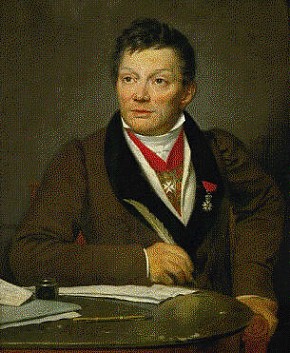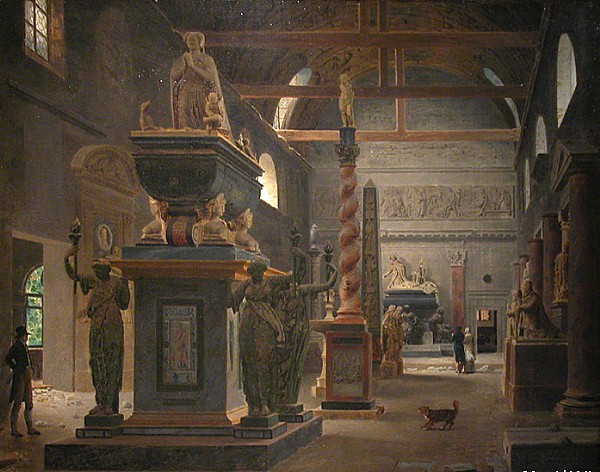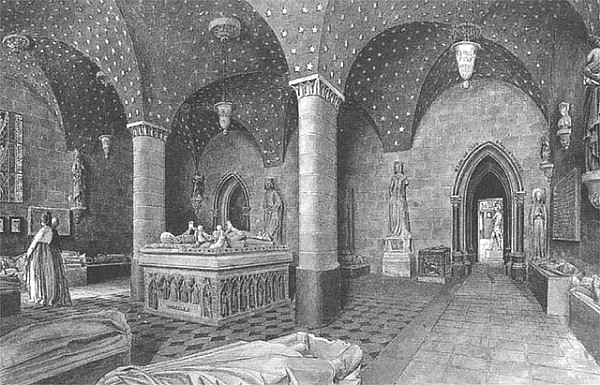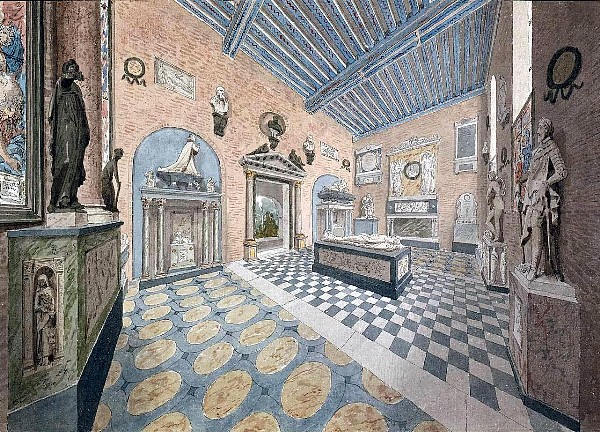
Marie Alexandre Lenoir
archaeologist; b. December 26, 1762; d. June 11, 1839.
Lenoir was a pupil of the historical painter, Doyen. He was placed in charge of the magazine established by the revolutionary government for the storage and sale of confiscated property. This depository, the old monastery des Petits Augustins, where is now the École des Beaux Arts, he made the nucleus of a museum, which was opened to the public August 10, 1793. March 30, 1796, his collection received the official title Musée des Antiquités et Monuments français. During the Terrour Lenoir was obliged to act with great vigilance and courage. Bonaparte and Josephine took great interest in the Musée des Monuments français. Eight thousand francs annually were assigned to it under the Empire. Lenoir's main purpose was the preservation of monuments which were especially associated with the history of French art and of the French people. He saved in this way much of the best work of the Mediaeval and Renaissance periods. He preserved also numerous chronicles and documents, public and private. The modern archaeological movement in France derived its principal impulse from his efforts. By decree of the government of Louis XVIII, dated December 18, 1816, it was ordered that the works collected by Lenoir should be returned to their original owners. The tombs of the kings of France were carried back to the church of S. Denis, and various monuments to the churches of Paris. This dispersion was accomplished with haste and disorder, much property was destroyed, and many monuments abandoned in the cloisters and garden of the deserted monastery. Among these were the great portal of the château of Auet and some superb architectural decoration from the chateau of Gaillon, near Rouen, which were rearranged by Duban in the court of the École des Beaux Arts when that building took the place of the old Petits Augustins. Between 1792 and 1816 Lenoir published not less than twelve editions of the catalogue of his museum, and in 1800 his Musée des Monuments français (Paris, 5 vols. 8vo). Folio books with plates were also devoted to this museum.
| |
A museum should be instituted according to two points of view, one political, the other concerned with public instruction; from the political point of view, it should be established with enough splendor and magnificence to speak to every eye . . . ; from the instructional point of view, it should include everything the arts and the sciences could together offer to public education.
Alexandre Lenoir, Musée des monuments français, 1800.

The Convent of the Petits-Augustins, in the spaces of which Lenoir organized his museum, was, although Lenoir paid little attention to the fact, itself a historical monument of some importance. Founded by Queen Marguerite de Valois in 1609, and build betwen 1615 and 1640, it was indeed a late example of Lenoir's favorite architectural style, the French Renaissance.
For Lenoir, however, the convent merely served as a convenient framework for his new museum. . . . Lenoir divided history into epochs. He took the century as his basic unit, organizing his collection so that the visitor would proceed from room to room as from century to century.
In the former church of the convent, an introductionary room that encyclopedically displayed objects representing every century, provided a "survey" of "the infancy of art among the Goths, its progress under Louis XII, its perfection under François I, and the origin of its decadence under Louis XIV...
Anthony Vidler, The Writing of the Walls (1987), p. 170.
| |


|



